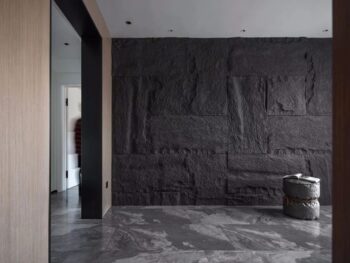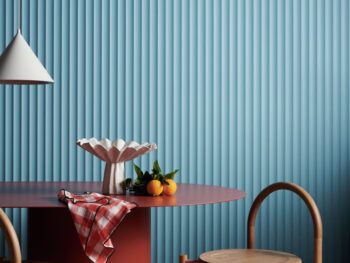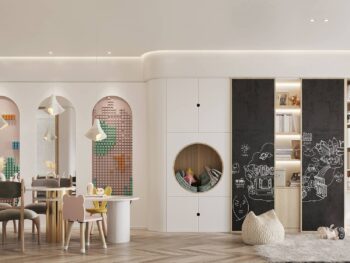
Wood Wall Panel Is Back in Style in 2023
Time flies and decorating trends continue to change, however, one traditional interior element is making a comeback with surprising style – wood siding. This decorative method with unique texture once again shines in modern homes, reigniting the inspiration for interior design.
From luxurious palaces to traditional country cottages, wood siding has always been known for its unique charm and functionality. They add warmth and texture to walls while providing acoustic and thermal insulation properties. Today, wooden wall panels are not just a symbol of traditional style, they have entered modern homes, bringing a natural, comfortable and stylish atmosphere to living spaces.
In this article, we’ll take an in-depth look at the resurgence of wood siding, including its historical background, versatility, suitable decorating styles and why more and more people are choosing to incorporate it into modern home designs. Wooden wall panels are no longer limited to ancient traditions, but have become an indispensable fashion element in home decoration.
Related Articles
Explore Different Types of Wood Wall Panel
What Is the Difference Between Solid Wood Wall Panel and VJ Wall Panel?
Choose Solid Wood Wall Panels or PVC Wall Panels?
Comparison of Solid Wood Wall Panel and WPC Wall Panel
Let’s trace the history of wood siding, understand their importance in today’s interior design, and how you can incorporate this classic element into your home space, giving it the perfect blend of classic and modern.
I. Old wood paneling and modern wood paneling
For many people, the concept of wood siding brings uncomfortably to mind the 4-foot-by-8-foot fake boards from big lumber mills that were ubiquitous in homes in the 1960s and 1970s.
This wood paneling emphasizes that it is made of wood. No real wood can look like wood quite like these panels of cherry, oak, beech or other gorgeous wood species. In some cases, the visible portion is indeed solid wood—a small piece of wood veneer on pressed board. But many are cheaper panels that use a plastic paper laminated membrane to convey the impression of wood.
Wood paneling has come and gone and is back. From the 1980s onwards, wood paneling was often replaced, but is now popular again, albeit in a changed form.
Today’s wood paneling is in some ways a throwback to the glory days of solid wood paneling than the cheaper products of the 1960s and 1970s, but with many modern improvements.
Modern wood paneling features:
– Hardwood veneer
– Premium plywood backing
– Low-grade hardwood on back to control movement
– Dimensions variable
– Sustainable wood sourcing
Wood has long been used to decorate rooms. In ancient times, carved planks of mahogany, oak, walnut, and even pine provided some thermal and sound-absorbing properties and accentuated the room’s importance. You can still buy antique paneling for an entire room, but these can cost tens of thousands of dollars.
While the photo veneer version of paneling is still available, it has largely been replaced by real hardwood veneer—not quite the same as real wood paneling, but much better than the old paneling.
What about actual solid paneling, the solid hardwoods that once graced colonial mansions? You’ll be hard-pressed to find solid wood paneling except in unique architectural antique stores.
The mahogany forests were not cut down to provide strong boards for the houses. No matter what you end up buying, it’s almost certainly going to be veneers.
Today’s products come in exciting solid hardwood veneers including wenge, mahogany, zebrawood, macassar or teak, not to mention standard favorites such as oak, maple and birch.
These veneers are thicker and stronger than the extremely thin veneers used in the 1960s. Modern paneling features better mounting systems, improved edges, and custom sizes.
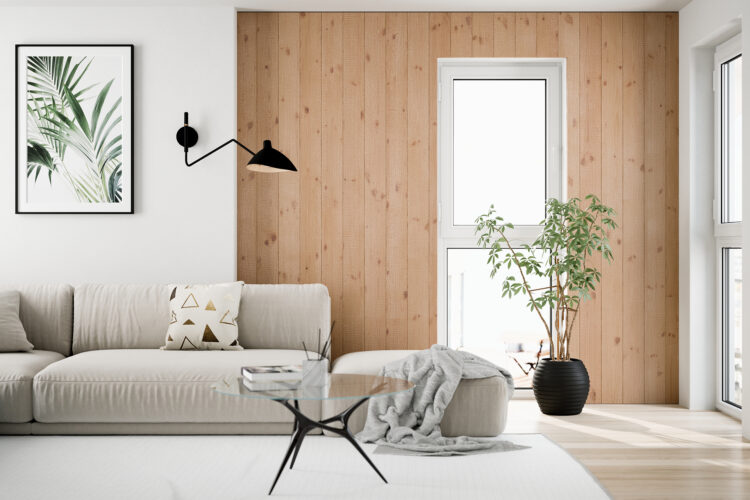
II. Why are wood wall panels becoming popular again? And what are its advantages?
1. Reviving the essence of tradition
Wood paneling originally appeared in ancient buildings and palaces to add luxury and texture. Today, this tradition has been revived and plays an important role in home decoration. Wood paneling is known for its unique texture and color of natural wood, bringing a natural beauty to interior spaces. Its classic V-groove design or vertical inlay style can enhance the texture and depth of the wall, creating a comfortable and warm atmosphere.
2. Modern interpretation
The revival of wood paneling isn’t limited to traditional decorating styles. Today, designers and decorators are reinterpreting this classic element and incorporating it into contemporary interiors. By choosing different types of wood, paint colors and design styles, wood paneling can adapt to a variety of decorating needs, from traditional to contemporary, and from rural to urban styles.
3. Versatility
In addition to its aesthetic value, wood paneling also has a practical purpose. They can be used to decorate walls, ceilings, fireplace surrounds and even furniture surfaces. In addition, wood paneling also provides sound insulation and thermal insulation, helping to improve the acoustic performance of indoor spaces.
4. Sustainability
Wood paneling is also a sustainable option for those who are environmentally conscious. By using certified sustainable forestry wood and environmentally friendly paints, you can reduce your environmental impact while enjoying the natural beauty of wood.
III. Can the size of wooden wall panels be customized?
Wood siding can often be custom sized to fit your specific needs. Custom sized wood siding ensures an exact fit for your renovation project, to fit specific wall or space dimensions.
Here are some considerations for custom sizing of wood siding:
1. Wall size
If your wall dimensions don’t match the standard dimensions, custom wood siding panels can ensure they fit perfectly without the need for extensive cutting or modification during installation.
2.Height and width
You can customize the height and width of your wood siding panels to meet your specific decorative needs. This is useful for creating a specific design or pattern on a wall.
3.Special shape
If you need to add a specially shaped wood siding to your wall, such as an arch or slope, custom sizing will allow you to create the wood siding to your specific shape requirements.
4. Color and material
Custom wood siding can also be customized to your color and material preferences. You can choose the type and color of wood that suits your renovation project.
5. Decorative elements
If you wish to add decorative elements to your wood siding, such as carvings or niches, custom sizing can also help you achieve these designs.
When considering custom wood siding, it is recommended to work with a professional master carpenter or decorating company to ensure that the size and design of the wood siding will meet your needs and be installed correctly. There may be some additional costs involved with custom wood siding, but they can ensure that your renovation project matches your wishes and requirements exactly, adding character and uniqueness to your interior space.
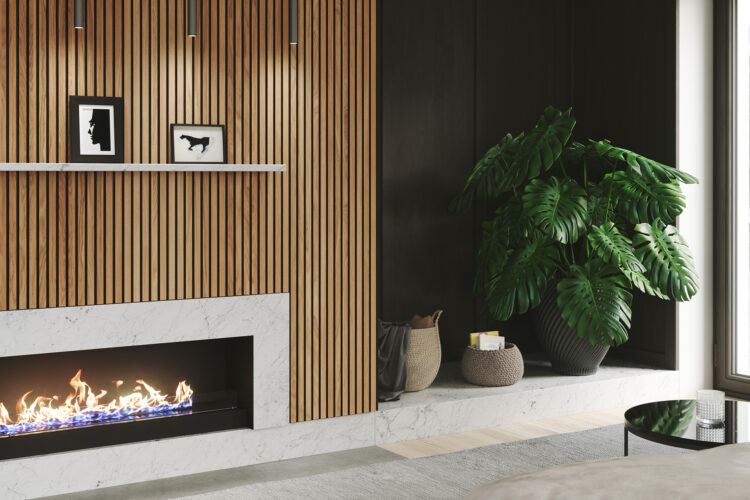
IV. Cost of Wooden Wall Panels
The cost of wood siding varies based on a variety of factors, including the following:
1. Wood type
Prices vary widely for different types of lumber. Some common woods such as oak, pine, walnut and cherry are generally more expensive, while some of the more common softwoods such as pine are relatively cheap. Specialty woods like redwood or mahogany may be more expensive.
2. Wood quality
The quality of the wood also affects the price. High-quality woods are generally more expensive because they have better grain, color, and sturdiness.
3. Types of wood siding
Wooden wall panels are available in different types and designs such as solid wood wall panels, MDF wall panels, VJ wall panels, etc. Different types of wood siding also have different prices, with some synthetic sidings generally costing less.
4. Size and customization
Custom-sized wood siding typically costs more than standard-sized wood siding because they need to be specially crafted.
5. Painting and decoration
If the wood siding needs to be pre-painted or decorative elements added, this will also add to the cost.
6. Market area
Lumber and wood siding prices may vary in different areas. In some areas, specific types of wood may be more readily available and therefore less expensive.
7. Installation cost
Installing wood siding typically requires additional costs, including labor and materials. The difficulty and complexity of installation can also affect costs.
Cost is where the real difference lies. With traditional home center-style pressed wood paneling, you can purchase 32 square feet of plank for as little as $12 and as much as $40.
High-quality wood paneling is much more expensive. Horizontal ebony paneling of the same size costs about $400. Still, this is much cheaper than solid ebony. For more typical hardwoods, the price difference won’t be that big. For example, a walnut veneer panel costs less than $90 each, while a photo-generated walnut-like panel might cost $20.
When paneling is finished with real hardwood veneers, one of the cost drivers is not only the hardwood on the front, but also the hardwood on the back. Typically, a higher grade of hardwood is used for the facade. The back side of the wood paneling uses the same hardwood, but is of lower quality. Manufacturers do this to control the rate of expansion and contraction. If only one side of the board is taped, movement on the back may put stress on the entire board, causing cracking.
Tips
An economical option is peel and stick panel strips with self-adhesive strips on the back. These products require no nails, just peel off the backing and stick to the wall. In addition to requiring no nails, these products come bundled in plank packs that allow for a variety of layouts.
Overall, wood siding can cost anywhere from a few dollars per square foot to tens of dollars. Therefore, before purchasing wood siding, it is recommended that you be clear about your budget and take into account the required quantity, wood type, design, and other factors to make an informed purchasing decision. Additionally, it’s best to work with a professional decorator or master carpenter to get detailed advice on pricing and finishing options.
V. Conclusion
Over time, wooden wall panels have once again proven their irreplaceability in interior decoration. This ancient decorative element, from ancient palaces to country cottages, has always been known for its traditional charm, texture and practicality. Today, wood siding is not just a symbol of the past, they have taken on a new lease of life and become a treasure of modern home décor.
The resurgence of wood siding not only provides us with traditional beauty, but also brings multiple benefits to our modern lives. Not only do they add to the warm ambience of interior spaces, they also provide soundproofing, thermal insulation and decorative functions. Additionally, the versatility of wood siding makes it suitable for a variety of decorating styles, from classic and traditional to sleek and contemporary.
When we incorporate wood siding into modern home designs, we perfectly blend traditional aesthetics with modern fashion to create a unique and personalized interior. By choosing the right wood, color and design we can shape a space to suit our taste and needs, whether in a living room, bedroom or dining room.
So the resurgence of wood siding isn’t just a throwback to the past, it’s cutting-edge in today’s decorating trends. They remind us that traditional elements have their beauty as well as their utility, and incorporating them into modern decor can create a truly unique, welcoming and stylish living environment. May this renaissance continue to inspire our creativity and make our homes more beautiful and comfortable.
Quick Quotation

